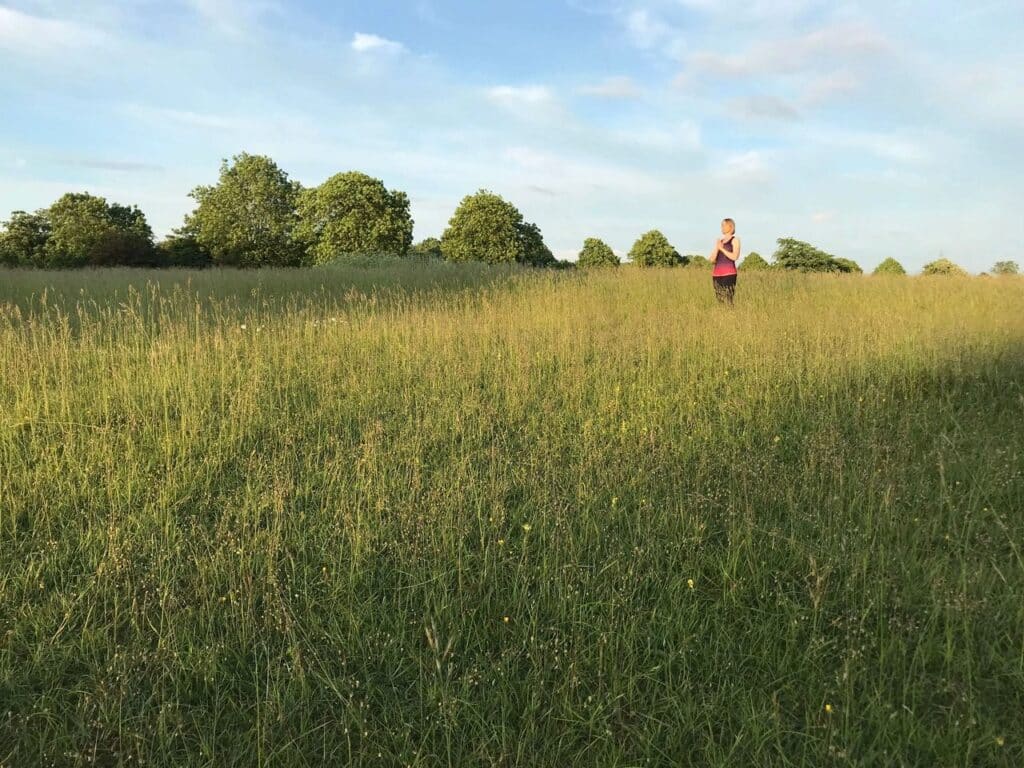As we have now moved beyond the Autumn Equinox and are moving inexorably towards the dark day of winter, I thought I’d take a look at Vitamin D, otherwise known as “the Sunshine Vitamin”.
Vitamin D deficient?
There’s always lots of press about vitamin D around this time of year as our main source of vitamin D, the sun, begins to lose its potency here in the UK. Vitamin D is synthesised when we expose our skin to the right wavelength of UV light – most conveniently found in sunlight. But the waning power of the sun’s rays here in the northern hemisphere mean that our bodies simply cannot make Vitamin D from September to the end of March/early April. If we are lucky enough to have a surplus, our bodies can only store it for up to two months.
And that’s before other mitigating factors (including, presumably, rather disappointing summers like the ones we often experience in the UK) are taken into account. These include modern ways of living such as wearing clothes, working indoors and using sunscreens – all of which prevent us from synthesising Vitamin D. It all means that it is estimated that about a quarter-to-a-third of all adults in the UK are Vitamin D deficient. In addition to this, older skin is less effective at making Vitamin D, so it’s important for us midlifers to pay attention.
Vitamin D for peri-to-post menopausal women
Peri-to-post menopausal women in particular need to keep their vitamin D levels topped up. As oestrogen plays a key role in protecting and maintaining bone density, women in this stage of life are especially affected by a potential loss of bone strength as their oestrogen levels decline. Diminishing bone strength can lead to conditions such as osteopenia (a lack of bone density) and subsequent osteoporosis which leads to an increased risk of bone fracture. In later life osteoporosis is indirectly responsible for more female deaths than breast cancer so it is clearly worth doing all we can to prevent it.
Vitamin D comes into play as it has an essential role in keeping our bones healthy, helping bones absorb calcium to grow new bone tissue. The natural decline in protective oestrogen from perimenopause onwards means that bone starts to break down at a faster rate than it can be re-built, but keeping Vitamin D levels optimal will minimise this loss of bone density.
More benefits of Vitamin D
The benefits of vitamin D don’t stop there. And not just for women. There’s been a steady stream of research indicating that it provides a host of other health benefits including boosting the immune system, preventing a range of cancers, protecting against multiple sclerosis and heart disease and preventing rheumatoid arthritis. Many researchers believe that Vitamin D is vital to healthy brain function and studies also suggest that it might play an important part in regulating mood and warding off anxiety and depression.
So it’s worth making sure that we are all getting enough.
Without sunshine how do we get Vitamin D?
While our bodies make vitamin D most effectively from sunshine, you can get vitamin D from a small number of foods including oily fish (such as herring, mackerel and wild salmon), red meat, liver and egg yolks. The skin of mushrooms synsethises Vitamin D in a similar way to that of humans, so you can get vitamin D from fungi. Public Health England recommends everyone over the age of one needs to have about 400 IU (10 micrograms) of vitamin D each day to stay healthy. As this is equivalent to one salmon fillet or 10 egg yolks it might be a good time to either stock up on these groceries or think about taking a supplement to get you through the winter months.
(You could consider a lovely winter break in the Caribbean, but I can safely guarantee that isn’t happening to anyone in my household this year. Or any year in the foreseeable future for that matter.)
Vitamin D supplements
If you do decide to take a supplement, Vitamin D3 (as opposed to D2) is the best kind of supplement to take (vegetarians please note it is hard to find veggie ones as Vitamin D3 is mostly found in animal products) and it is available in both tablet and spray form, the latter of which is apparently easier to metabolise. It’s also important to note that its best to take Vitamin K2 alongside the D3 – these are often found together in the same supplement. While D3 increases calcium levels in the blood, K2 keeps the calcium out of the artery walls and soft tissues and directs it into your bones instead.
There is also anecdotal evidence to suggest that taking a dose in the morning promotes better sleep than taking it at night. Levels of Vitamin D are inversely related to melatonin levels which control your circadian rhythms so it makes sense that taking it at night might disrupt your sleep.
And just as you need to be careful to not burn, as always you need to be careful with supplements – although you need to work hard to overdose on Vitamin D. A daily intake ranging from 40,000-100,000 IU (1000-2500micrograms), for one to several months, has been shown to cause toxicity in humans. Even a maths dunce like myself can work out that that’s one hundred times the recommended dose. Every day.
Conclusion
Blood tests to check your vitamin D levels are fairly straightforward but it seems that most of us, particularly peri-to-post menopausal women, could do with supplementing our sunshine (or rather lack of) in the winter months. Furthermore if you consider that as we age skin becomes less effective at synsethising vitamin D, taking a supplement strikes me as a no-brainer. Implementing one simple thing which can have such a beneficial impact on your health further down the line – I mean, why wouldn’t you?
Do you take a vitamin D supplement? It’s so important. Please feel free to share this information with anyone you think might find it helpful.


